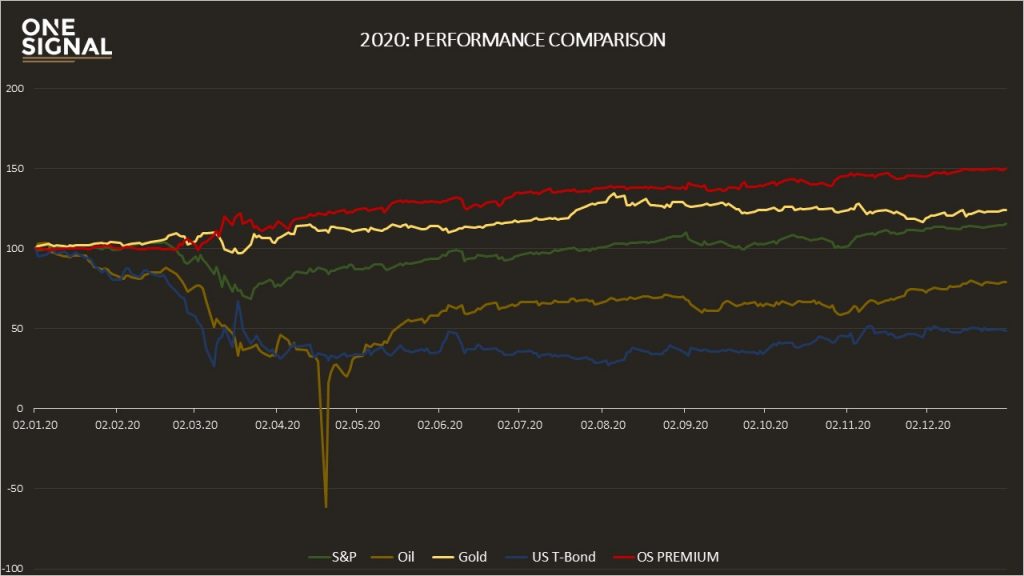One Signal recommends initially using our signals on a demo trading account or subscribing to a free trial to gain conviction in our product
2020 was an exceptionally good year. While the first half of the year was embossed with the shock waves due to economic standstill (see H1 2020 report), the second half was dedicated to the fight against the spread of the virus and the rescue of economic and social structures. Central banks inflated their balance sheets and flooded the market with cheap money in the hope of boosting investment at zero cost. Money supply has grown exponentially on a quarterly basis over the past year. Data also showed a rise in the US households’ savings rate to increase from 8.1% in 2019 to 33% in 2020, driven by a lack of perspective among many individuals and fear of recession. Despite worldwide government efforts, a contraction of the global economy could not be prevented. At the same time, it looks like the US will get off lightly with a 3.7% drop in GDP. The Eurozone, on the other hand, will have to cope with a negative growth rate of 7.5%. The second half of the year was marked by the heated presidential election campaign in the USA and the race for the Covid-19 vaccine, which on one hand heated tempers, but also raised hopes for an end to endless lockdowns.
In line with the prevailing atmosphere, the markets reacted in a highly volatile and extremely unpredictable manner. Thankfully, fear and panic did not have a lasting impact on stock markets, as new all-time highs were achieved in New York. Despite this turbulent year, the S&P500 closed the year with an impressive gain of over 15%. Outperforming the S&P500 and driven by global uncertainty, gold rose by 24.70%, while oil ended the year down by -21.23%. The losers of 2020 were US T-bonds with a whopping -51.81%. ONE SIGNAL: In the second half of the year, we had some reason to worry that the good performance of the first six months might be partially surrendered. However, the system adapted to the new market conditions (Robinhood trader) and extended its gains. With a spot landing of +50.00%, ONE SIGNAL_Smarter Trading has delivered far above average performance. The performance calculation of ONE SIGNAL_Smarter Trading is calculated without transaction costs, slippage or tax component. The reason is that the implementation of the signals is possible with a wide variety of securities and many strategies. Each implementation method incurs its’ own costs, all of which together are not as significant as they were ten years ago. Slippage is not considered, because ONE SIGNAL_Smarter Trading is not price-oriented, but time-oriented. I.e., buy and sell orders should be based on the cash market of the NYSE. Only for the implementation of the stops, a slippage could be considered. However, the stops are rarely activated.
